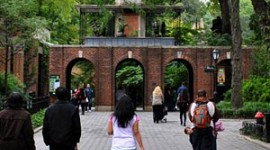Pioneer Information
Born and raised in Cambridge, Massachusetts, Winslow earned his bachelor’s degree from Harvard in 1962 and his M.Arch. and M.L.A. from the University of Pennsylvania in 1965 and 1967, respectively. He worked at the design firm EDSA and at Clarke & Rapuano, among others, before opening his own practice in 1975. In the 1980s, he was the landscape architect in charge of the restoration and rehabilitation of Gracie Mansion, the official residence of New York City’s mayor, and he served as vice-president of the Parks Council of New York (later New Yorkers for Parks) and was appointed to the city’s Art Commission (later the Public Design Commission).
Beginning in 1978, with his authorship of “The Historic Landscape Report for the Ramble,” much of Winslow’s work focused on Central Park. He played a key role in restoring and rehabilitating several of its featured landscapes, including the Bethesda Terrace and Fountain, the Cherry Hill Concourse, Rumsey Playfield, The Point, and the Loeb Boat House Garden, and was a contributing author to Rebuilding Central Park: A Management and Restoration Plan, published in 1987 by MIT Press. He was also the leading landscape-architectural consultant for the renovation of the Central Park Zoo, and of the city’s Christopher Park, in the West Village. His plans for the revitalization of Battery Park informed the work that would follow, although he did not live to see them implemented. Winslow’s pioneering career in the preservation of historic landscapes was cut short when he died of complications resulting from AIDS, at the age of 48. The Parks Council honored him with an eponymous award, and his drawings and papers are preserved at the Architectural Archives of the University of Pennsylvania.













